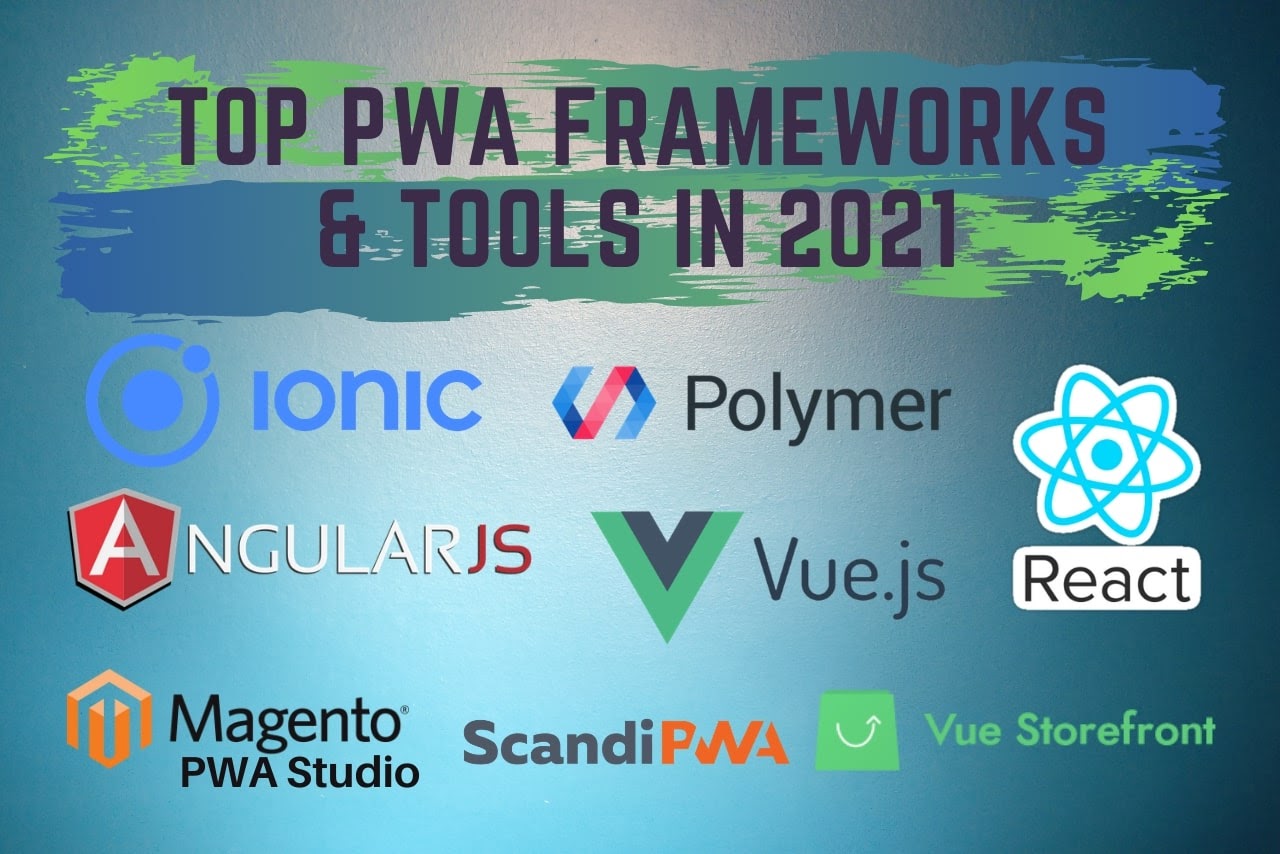Progressive web applications are currently rising to the peak of their popularity. After all, this modern solution is an outstanding alternative for native apps, boasting impeccable UX and UI, enviable fast speeds, and a plethora of features that have a positive benefit on mobile conversions.
Of course, there are many things that’ll influence the journey of getting a progressive app for your website. As such, there are numerous approaches to building the app in terms of development, plus a lot will depend on the platform that your site is based on and how complex and large the site itself is. The same can be said about the estimated timeframes and overall costs (for instance, Magento PWA pricing may differ from a PWA built for Shopify).
On this page, we’ll introduce you to the five frameworks that developers generally choose when working on progressive web applications. Along with that, we’ll cover the alternative tool kits that are also available for PWA development and explain why developers make their choice in favor of one path or the other.
5 Most Commonly Used Frameworks for Building PWAs
Progressive web applications differ from regular websites and native applications in technical terms. As such, these apps are Javascript-based, in much explaining why they have such modern capabilities that can cope with the growing demands of users. All in all, they are needed for enhancing the user experience on the website and for, consequently, helping a site to improve its conversions.
As it was shortly mentioned before, there are many paths that can be taken when it comes to their development. Among them is the choice to create the PWA application by custom coding the whole thing using a modern framework. Below, we’ll go over the top 5 of such PWA frameworks.
1. React.js
Opening the list is ReactJS. This open-source Javascript library is provided by Facebook and is aimed at assisting developers in PWA creation. Among its strengths to be noted include solutions for crafting dynamic user interfaces, as well as various “moves” for handling the matter of rendering in a smart way.
2. Angular.js
The second and very popular framework for developing PWAs is AngularJS. It is the solution that was released by Google that presents much ready-made functionality. Although Angular has been around for quite a while only, some of its versions, including the 5th, are applicable for progressive web applications. Furthermore, this framework implies having a lot of development skills and is sometimes considered an option for more experienced developers.
3. Vue.js
Thirdly, VueJS should surely make the listing. This framework is also open-source and was chosen for the PWA development of numerous large-scale eCommerce sites. What is more, many developers can find it handy not only for progressive web apps but also for handling cases with rendering in general. Vue is commonly selected for small apps as well.
4. Ionic
Fourth in the countdown is Ionic, a kit for software development that is considered a neat option for not too experienced developers who are just starting out with PWAs. While many things come out-of-the-box, there are still downsides as Ionic-built PWAs are considered to be slower and weaker in performance than others.
5. Polymer
Finally, one more solution by Google, Polymer, is currently escalating in terms of usability by developers. One of its main highlights includes the solutions that help developers deal with design peculiarities.
PWA Development Tool Kits: 5 Most Popular Ones
As you might have already guessed, writing the whole code of the PWA manually on your own isn’t the only possible option to go with. Luckily, there exist themes that can be customized and personalized according to the specific needs of the to-be application.
Such SDKs are constructed to assist developers in programming a progressive web application and saving their time. Generally, the kits are fitted with reusable code, components, libraries, and other pieces that are vital for PWA construction. Many have off-the-shelf solutions for architecture, components, rendering matters, SEO configurations, etc.
Here are five quality PWA kits that deserve attention:
- Vue Storefront (open-source JS stack for creating a PWA).
- ScandiPWA (a quite large-scale solution, a third-party developed kit for building a PWA on Magento).
- Magento PWA Studio (the official toolkit presented by the Magento team for creating PWAs on the basis of Magento).
- SuperPWA (this theme is a widespread choice for making PWAs for WordPress-based websites).
- Webpack PWA (this is a handy module bundler tool that developers can make use of).
At this point you might have the following question cross your mind: if there are ready tools, why bother coding the PWA from scratch then?
There are downsides of plain theme use (they explain why developers often prefer to code by themselves with the use of modern frameworks listed in the previous part of the article).
- Well, the thing is that these solutions are generally not complete. There is no full tool kit yet that’ll allow you to avoid custom coding altogether.
- These solutions were developed to be somewhat applicable everywhere and to cover a broad range of cases. This means that you’ll have to spend a bunch of time “cutting out” excessive code that’s irrelevant to your application. If you don’t do this, you’ll slow down the app.
- Moreover, the packages don’t usually have solutions for custom cases or requests, therefore, you’ll still have to create unique parts of the PWA on your own.
Final Thoughts
To conclude everything mentioned above, there are multiple ways you can build a progressive web application. Among the most common ones is the choice to code the application using a framework like React.js, Angular.js, or any others described in this post.
An alternative to that is customizing a development tool kit, such as ScandiPWA or Vue Storefront. These tool kits aren’t all-encompassing yet which suggests that there’s a lot of work with their configuration and customization in any scenario. Perhaps, after some time, when the third-party packages will be more complete and embrace many versatile cases, they’ll be a more appealing variant for developers. Of course, developers can also use both of these options, combining unique code with borrowed “ready” solutions for constructing their PWA.

About the author :
Alex Husar, Chief Technology Officer at Onilab with 8+ years of experience in progressive web application development, Magento migration, and Salesforce development. He graduated from the Czech Technical University and obtained a bachelor’s degree in Computer Software Engineering. Alex’s expertise includes both full-stack dev skills and a strong ability to provide project-critical guidance to the whole team.
Gravatar : [email protected]
Social media:
https://www.linkedin.com/in/alex-husar
https://twitter.com/AlexHusar1






